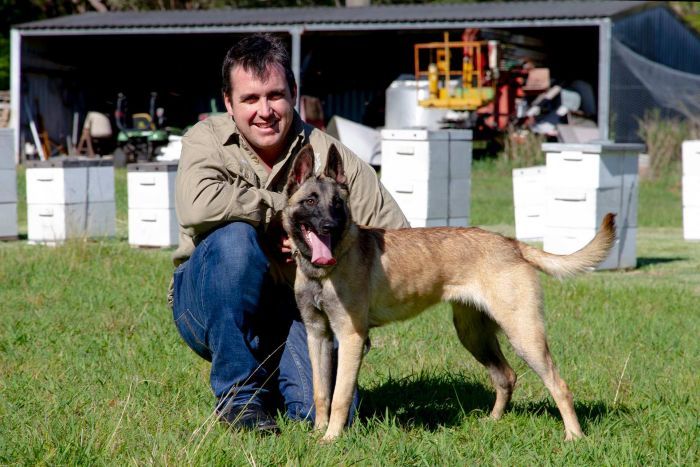By: Anthony Scully
Hunter Valley apiarists Sam and Bianca Giggins are waging a personal battle with bee disease American foulbrood (AFB) with the help of a family pet.
The proprietors of Williams River Honey are training their one-year-old Belgian Malinois pup Missy to detect the disease in their hives.
At the annual Tocal Beekeepers Field Day, in the New South Wales’ lower Hunter Valley, Missy was mobbed for selfies following a demonstration.
Moving from hive to hive, she was able to successfully detect the AFB bacteria contained in vials inside stacked hives.
“When she finds the AFB, she marks that by sitting in front of that hive and her nose goes to the front of the entrance,” Ms Giggins said.
“Then we click a little clicker — as dog training people might know; there’s a little handheld clicker that we click for her.
“And then we [give her a] food reward or play with her, so we keep her interested and keep her drive going.”
While the training is still a hobby for the Giggins family they are hoping Missy may one day serve the commercial sector.
“We’ve had [the disease] in our hives and it’s a personal thing, a personal battle we’ve got against this AFB,” Mr Giggins said.
Early and accurate detection essential
The NSW Department of Primary Industries (DPI) said AFB disease was the most serious brood disease of honey bees in New South Wales.
Technical specialist in bees at DPI Goulburn, Doug Somerville, said AFB was caused by the bacterium Paenibacillus larvae and is a notifiable disease under the NSW Apiaries Act 1985.
“In Australia it has been found in all states [and] there is a persistent low level of infection in NSW,” he said.
“Early and accurate diagnosis of this disease is essential if control is to be effective.”







